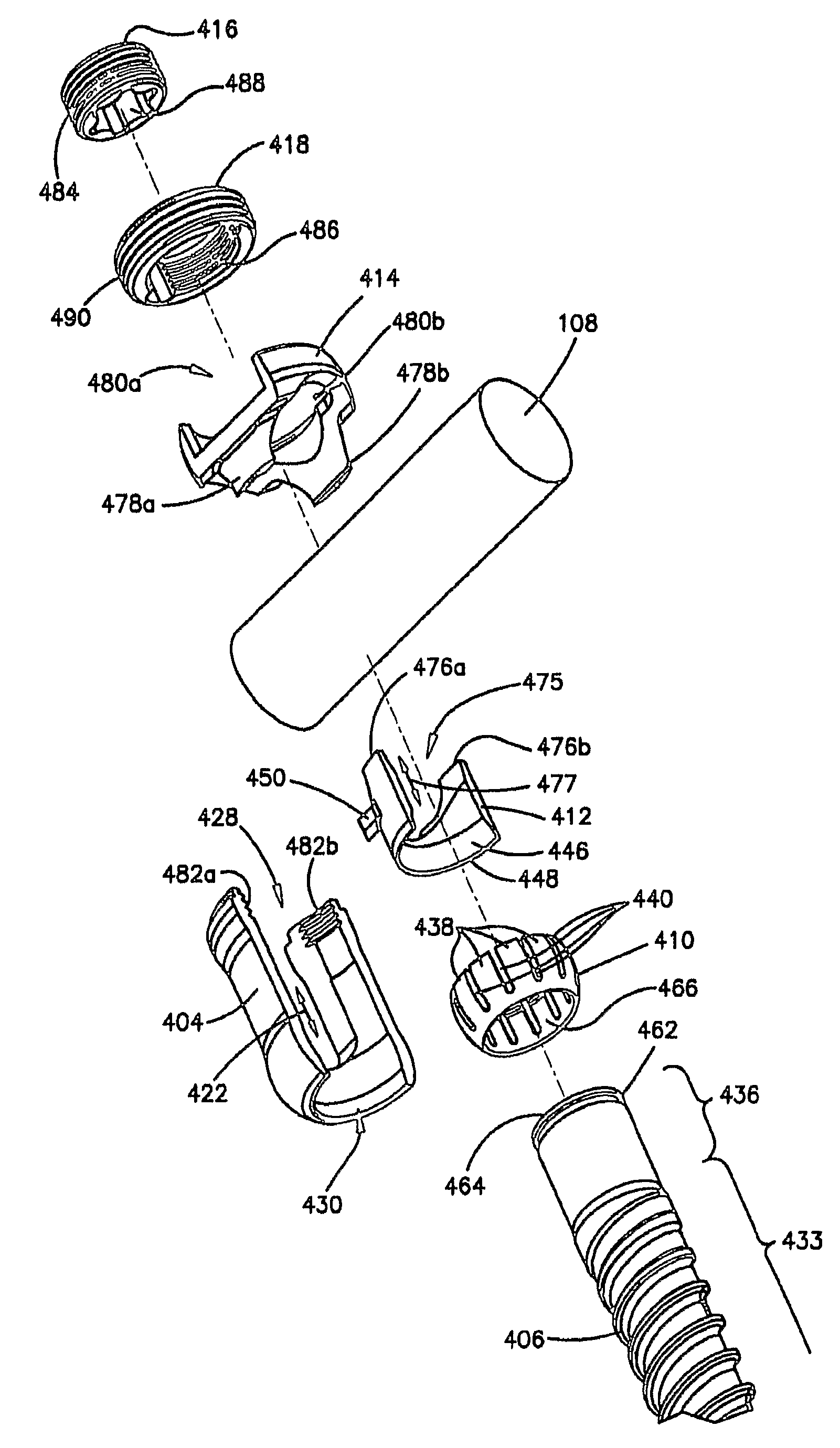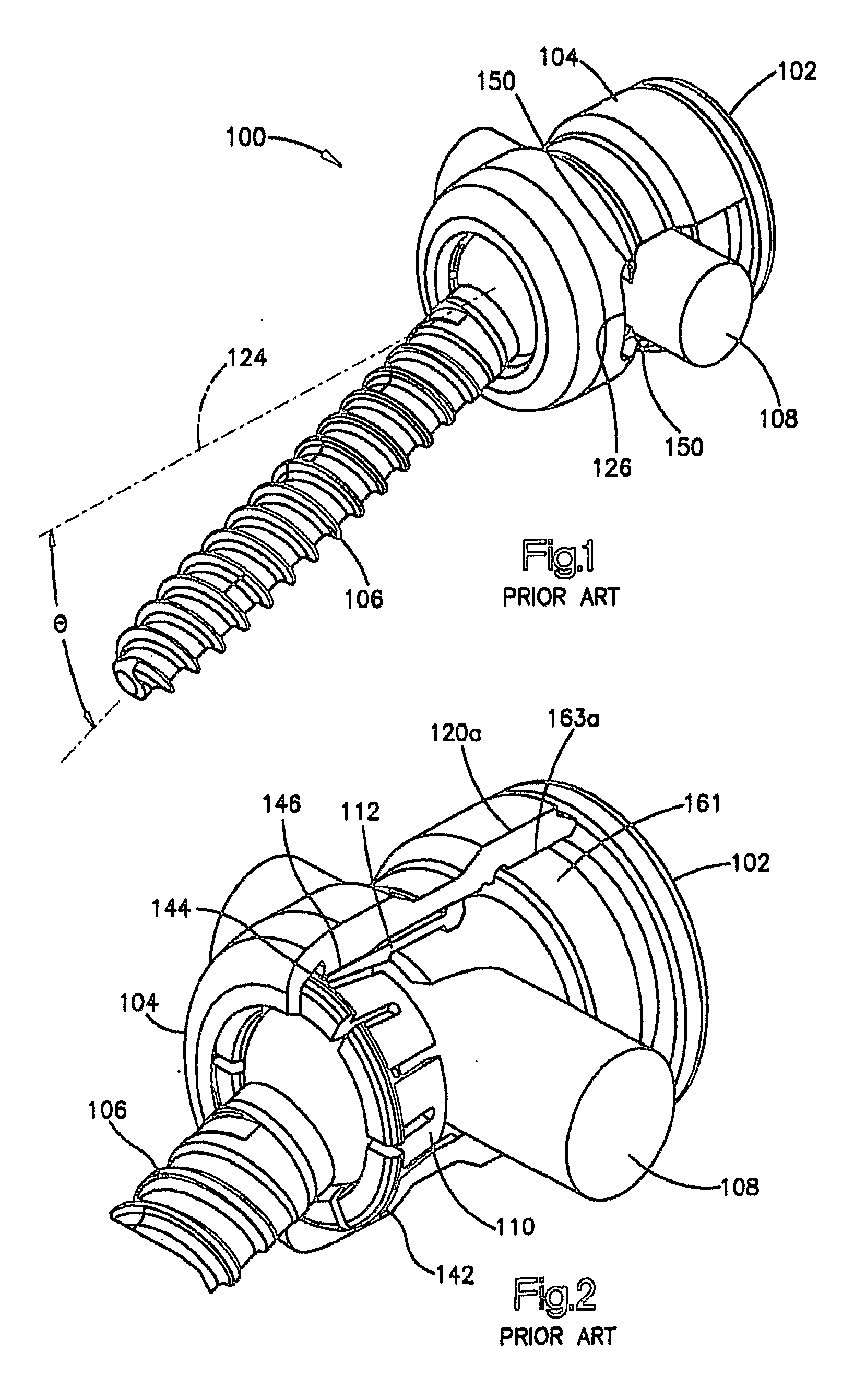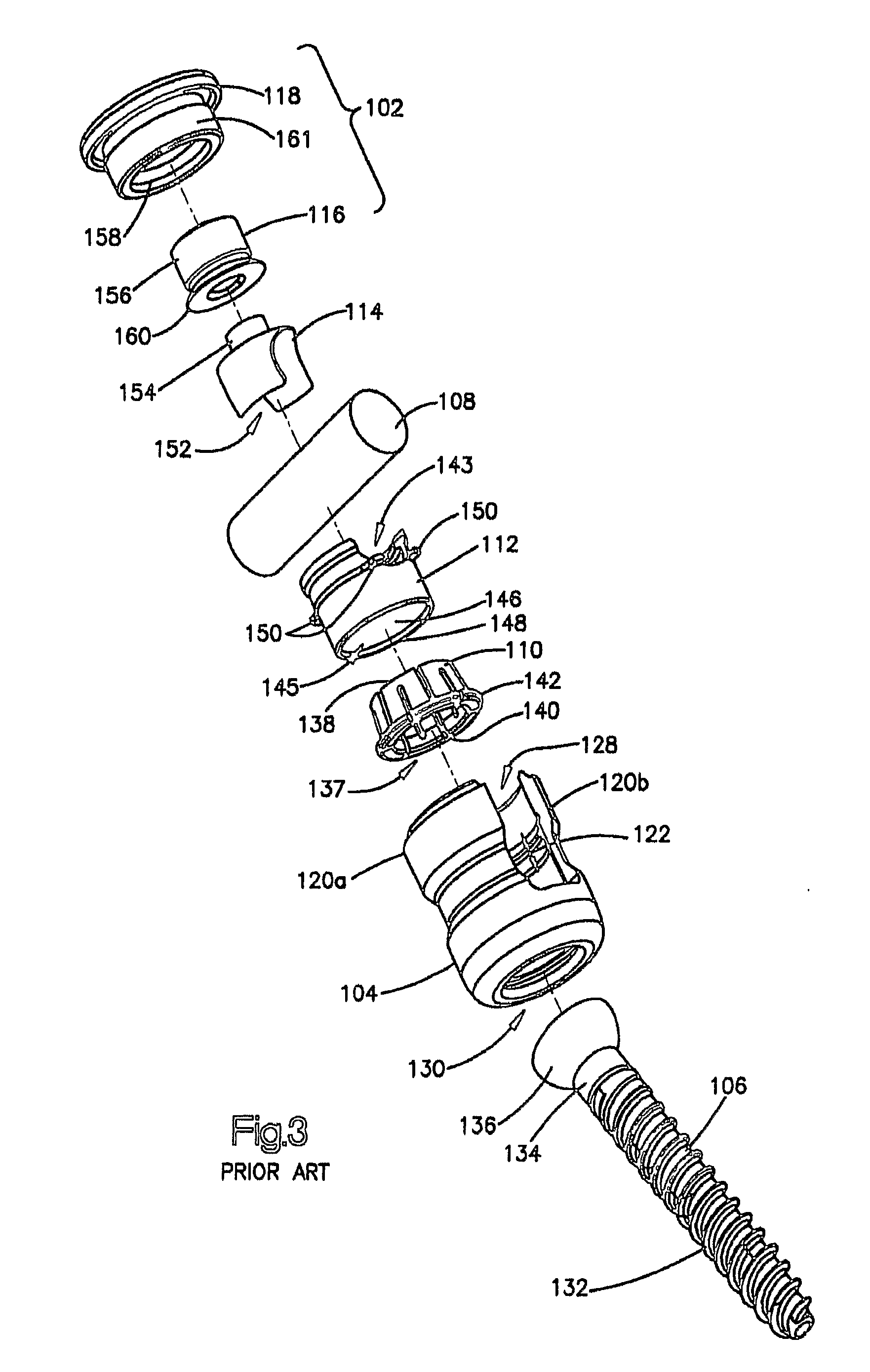Polyaxial bone anchor with headless pedicle screw
a technology of headless screws and polyaxial screws, applied in the field of bone fixation devices, can solve the problems of large size, difficulty in spinal fixation and stabilization methods, and often out of alignment of anchor heads, so as to facilitate pivoting and/or rotation, facilitate locking of anchor members, and lessen the likelihood of anchor members inadvertently separating
- Summary
- Abstract
- Description
- Claims
- Application Information
AI Technical Summary
Benefits of technology
Problems solved by technology
Method used
Image
Examples
Embodiment Construction
[0018]The invention can be used to treat various spinal disorders including, for example, degenerative and other instabilities due to decompression, tumors, infections, and fractures.
[0019]Note that while the polyaxial bone anchor is described and illustrated herein with reference to certain preferred or exemplary embodiments, the invention should not be limited to those preferred or exemplary embodiments. Furthermore, the features described and illustrated herein can be used singularly or in combination with other features and embodiments.
[0020]FIGS. 1-3 show a known polyaxial bone anchor. Polyaxial bone anchor 100 includes a fastener 102, an anchor head 104, and an anchor member 106. A spinal rod 108 may be clamped or locked in bone anchor 100, while anchor member 106, which may be a pedicle screw, hook, or other similar structure (and is referred to hereinafter as pedicle screw 106) may be inserted into or attached to bone. Bone anchor 100 may also include a locking element 110, ...
PUM
 Login to View More
Login to View More Abstract
Description
Claims
Application Information
 Login to View More
Login to View More - R&D
- Intellectual Property
- Life Sciences
- Materials
- Tech Scout
- Unparalleled Data Quality
- Higher Quality Content
- 60% Fewer Hallucinations
Browse by: Latest US Patents, China's latest patents, Technical Efficacy Thesaurus, Application Domain, Technology Topic, Popular Technical Reports.
© 2025 PatSnap. All rights reserved.Legal|Privacy policy|Modern Slavery Act Transparency Statement|Sitemap|About US| Contact US: help@patsnap.com



